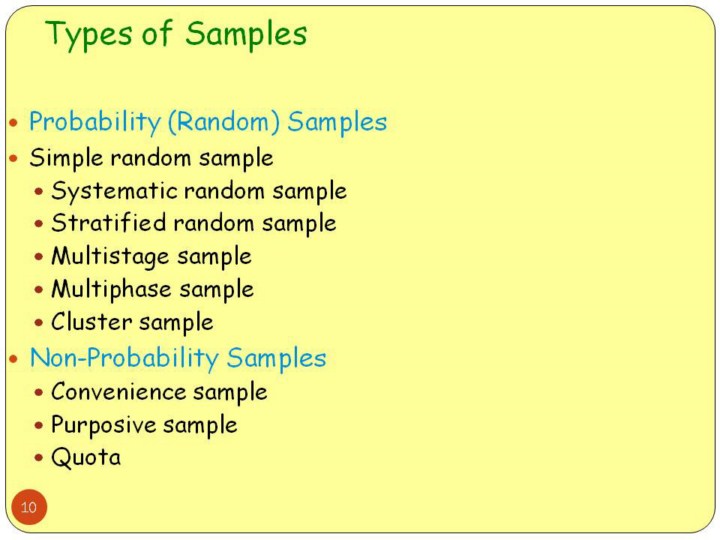Search for most updated materials
| front |1 |2 |3 |4 |5 |6 |7 |8 |9 |10 |11 |12 |13 |14 |15 |16 |17 |18 |19 |20 |21 |22 |23 |24 |25 |26 |27 |28 |29 |30 |31 |32 |33 |34 |35 |36 |37 |38 |39 |40 |41 |42 |43 |44 |45 |46 |47 |48 |49 |50 |51 |review |
 Two general approaches to sampling are used in social science research. With probability sampling, all elements (e.g., persons, households) in the population have some opportunity of being included in the sample, and the mathematical probability that any one of them will be selected can be calculated. With nonprobability sampling, in contrast, population elements are selected on the basis of their availability (e.g., because they volunteered) or because of the researcher's personal judgment that they are representative. The consequence is that an unknown portion of the population is excluded (e.g., those who did not volunteer). One of the most common types of nonprobability sample is called a convenience sample – not because such samples are necessarily easy to recruit, but because the researcher uses whatever individuals are available rather than selecting from the entire population.
Because some members of the population have no chance of being sampled, the extent to which a convenience sample – regardless of its size – actually represents the entire population cannot be known |
|